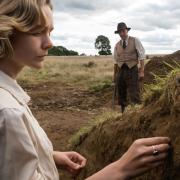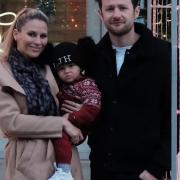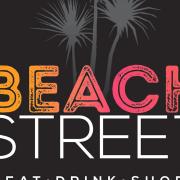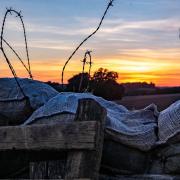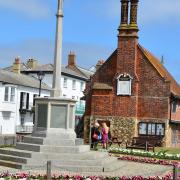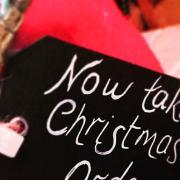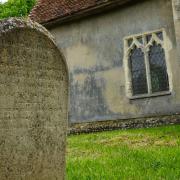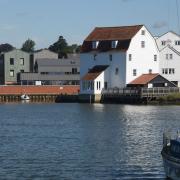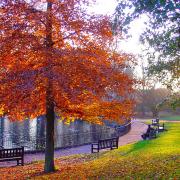This medieval village is famous as a location for the film Harry Potter and the Deathly Hallows. Lindsay Want discovers its magic charms and how it defended its citizens against the dark arts

It’s no wonder that filmmakers found inspiration for Harry Potter’s birthplace at Godric’s Hollow in the streets of Lavenham. A visit to its historic heart is like waving a magic wand and going back in time.
Lined with half-timbered buildings, packed tight to the point of almost propping each other up or pushing each other over, there are more house colours here than Hogwart’s Gryffindor, Hufflepuff, Ravenclaw and Slytherin put together – and just as much architectural wizardry.
Go for a wander and see the wonky windows, bulging brace beams and pink pargetting. Much of Lavenham’s charm lies in the quirkiness of every hall, house or huddle of cottages, and it would be a pity to miss it. Perhaps following a few loosely applied, first-year subjects from Hogwart’s School of Witchcraft and Wizardry can help bring the magic to life. . .

Subject I: Charms
There are two ways of looking at Lavenham. From a romantic 21st century perspective, we’re totally enchanted by how it apparently preserves a single period of our precious history almost perfectly.
At face value, it looks like it has led a charmed life, and we just can’t get enough of those timber-rich, leaning legacies created by Suffolk’s wealthy wool and cloth merchants sometime between the Black Death around 1350 and Henry VIII’s almost equally unpopular beard tax of 1535. But we rarely consider what it isn’t. Why it doesn’t look like other nearby towns which changed with the times, or what that might have meant for folk along the way.
Charmed or cursed, Lavenham’s story is not all roses around the door, Tudor or otherwise. Home to the 1490s equivalent of Bill Gates, and England’s 14th wealthiest town in 1524, when it welcomed Elizabeth I in 1586, it was already taking a nose-dive. Perhaps to recognise the real beauty of Lavenham, the rose-tinted spectacles must come off to see that it wasn’t always such a pretty picture.
Subject II: the Magic of History

Market Place is an awesome spot to start. Little Hall – built in the 1390s and one of Lavenham’s oldest surviving buildings – sits snuggled in the corner, blanketed in warm, rich ochre. The area was called ‘The Forum’ when the hall house was ‘modernised’ in Tudor times, replacing the cloth at its mullion windows with new-fangled glazing and adding a fancy, bright upper floor as an impressive cloth merchant’s showroom.
Edward III had originally encouraged weaving in England rather than see Flanders folk profit from converting fine English fleeces into expensive cloth. A century or so later, ‘Lavenham Blew’ broadcloth became big business. Clever capitalists managed supply chains, quality control and export channels, and its popularity made the town richer than Lincoln and York.
Looming white, huge and Hagrid-like alongside Little Hall, the Guildhall of Corpus Christi is Lavenham’s mighty proud Tudor statement, a feast of fenestration and ostentatiously carved oak from a time when timber wasn’t cheap, and leaded windows were a wonder. We’ll come back to revisit its raison d’être, but even during its construction in 1529-30, there were riots against job losses afoot.
A wander down Prentice Street puts history in perspective. Weavers’ houses and fine, jettied Woolstaplers Hall lead to the old Anchor alehouse by the stream – both absolute musts for fleece-washers and cloth-felters. Swing a right down Lower Road and then right again into Bolton Street to see another medieval hall house, blushing pink this time at Nos. 14-17. A left turn into Shilling Street opens up another hot topic.

Subject III: Astronomy
Messers Prentice, Bolton and Shilling were all gold-rich clothiers, but at Old Grange, an 18th-century engraver’s daughter, Jane Taylor, had a different glint in her eye. Whether she penned ‘Twinkle, Twinkle Little Star’ here or in Colchester remains a mystery, but some say she found inspiration in the heraldic stars of the De Veres – Earls of Oxford, lords of Lavenham manor and a family of astronomical wealth and power.
Hey, Diddle Diddle’s cat, dog, cow and fiddle allegedly have origins in the De Vere’s rich heraldry too. A right turn into Water Lane leads to the star of the show itself, Harry’s birthplace at Godric’s Hollow, aka De Vere House. You’ll find the family emblem twinkling to the left above the door – or all over the church if you fly up there later.
Subject IV: Transfiguration (shapeshifting)
Computer-generated imagery transformed this double-doored wonder into the Potter abode for the big screen, but that wasn’t the first time in its history that it had been pulled apart and was really going places. It was a mere lodge to the De Veres, with carved huntsmen guarding the beams and early herringbone brickwork.
Henry VII possibly popped by in 1498. But by 1929, an auction at Earl’s Court saw its east wing and front façade waiting at Southampton docks to start a new life in California at Randolph Hearst’s San Simeon castle. A media outcry and House of Lords debate saved it. Wool Hall in Water Street had a much narrower escape.
In 1911 it took a bicycle-riding, petition-waving vicar to save it as it was carted off to the Duchess of Ascot’s estate. Princess Louise relented, and the jigsaw pieces were put back in their rightful place. Believed to be the Guild of Our Lady, it’s now part of the Swan Hotel, and inside, the numbers on those beams can still be seen today.
Find out where to go fossil hunting in Suffolk
Subjects V & VI: Herbology & Potions
So why Water Street? With the stream diverted this way to help the cloth-makers – don’t miss the 1340 row of weavers’ cottages opposite De Vere House – the street soon became an open sewer. Colourfast Lavenham Blew was ‘dyed in the wool’, but the dyeing and fixing process included stinky stuff like stale urine and woad, a cabbage imported from Toulouse.
In about 1500, De Vere stepped nobly in to save the day – and the nostrils of Water Street residents – by sending the water underground using brick culverts. The two carved huntsmen on De Vere House may have guarded one of the footbridges. When Elizabeth I stayed in Molet House at the top of fashionable Barn Street, however, all dyeing must have temporarily halted due to her five-mile radius rule about overnighting near such activities.
Don’t miss The Old Grammar School (right) on the way up – it’s hardly Hogwarts, but was good enough for the painter John Constable and has a curious pair of carved legs and buttocks, rather rudely interrupted by an incongruous Georgian entrance door.
Subject VII: Defence against the Dark Arts
Lavenham’s Harry Potter film sees Harry’s Godric’s Hollow home torn apart by evil but dealing it a deathly blow at the same time. Back on Market Place, the splendid Guildhall was a purpose-built meeting house created by a religious guild of Lavenham’s wealthiest merchants, whose underlying intention was to deliver its members from evil. Providing an insurance policy for the soul, it organised prayers and good deeds to ensure its fraternity swifter routes to heaven. Green oak engineering at its finest, it has remained impressively upright for five centuries, unlike the High Street’s ‘Crooked House’.
Less than 20 years after its construction, religious guilds were suppressed. The hall went about serving and defending the town as a prison, pub, store, town hall, House of Correction, poorhouse, almshouses, Red Cross restaurant and museum. Its story reflects Lavenham’s true story, and, like Little Hall and so many others, it was only saved from physical downfall by people with vision and wealth enough to wave a magic wand.
On the corner of the Guildhall, perhaps no one will ever know if the carved figure is De Vere himself or Hercules, but he stands beneath an equally mighty ‘dragon’ beam and seems to be smiling. Now, what was Hogwart’s motto? Ah yes, ‘Draco Dormiens Nunquam Titillandus’ – Never Tickle a Sleeping Dragon.
Share more of life in Suffolk by joining our Facebook group.




